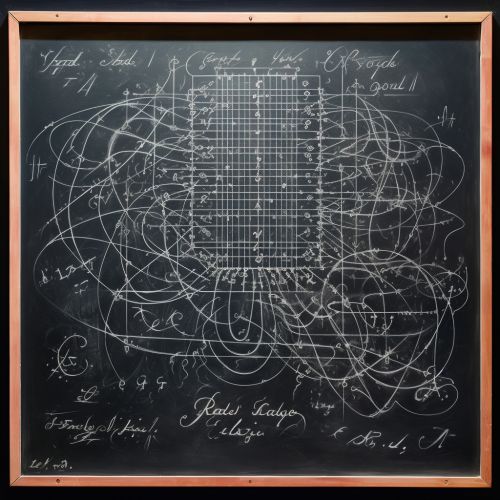Laplace's Equation
Introduction
Laplace's Equation, named after Pierre-Simon Laplace, is a second-order partial differential equation (PDE) that appears frequently in several branches of physics, including electromagnetism, fluid dynamics, and quantum mechanics. The equation is a simplification of the heat equation and is used to describe potential fields.


Mathematical Formulation
In two dimensions, Laplace's Equation is given by:
∆f = 0
where ∆ is the Laplacian operator, and f is a twice-differentiable real-valued function. The Laplacian operator in Cartesian coordinates (x, y) is defined as:
∆ = ∂²/∂x² + ∂²/∂y²
The equation states that the Laplacian of a function is zero everywhere. This is equivalent to stating that the function is harmonic.
Physical Interpretations
Laplace's Equation has numerous physical interpretations in various fields.
Electromagnetism
In electromagnetism, Laplace's Equation arises in the study of electrostatics and magnetostatics. Here, the function f typically represents the electric or magnetic potential. The solutions to Laplace's Equation in this context are the potential fields that arise in the absence of electric charges or currents.
Fluid Dynamics
In fluid dynamics, Laplace's Equation is used to describe the behavior of potential flows. In this context, the function f represents the velocity potential of the flow.
Quantum Mechanics
In quantum mechanics, Laplace's Equation appears in the Schrodinger equation for a particle in a state of zero energy. Here, the function f represents the wave function of the particle.
Solution Methods
There are several methods for solving Laplace's Equation, including:
- Separation of variables - Method of characteristics - Fourier transform - Green's function
Each of these methods has its own advantages and is suitable for different types of problems.
Applications
Laplace's Equation has a wide range of applications in physics and engineering. Some of the most common applications include:
- Analysis of electromagnetic fields - Design of microstrip antennas - Modelling of heat conduction - Analysis of fluid flow - Quantum mechanical problems
See Also
- Poisson's Equation - Helmholtz Equation - Wave Equation
